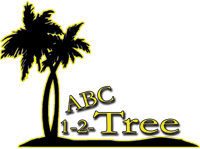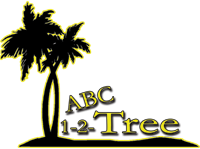When it comes to the removal of a tree, it can be a dangerous task for the average property owner. Not only can you damage the surrounding property, but you can be also be hurt in the process. Let our 20+ years of tree removal experience keep both you and your property safe during tree removal.
Why Tree Removal?
When a tree develops problems, it is frequently difficult to decide when to remove the tree. Dying trees that are not in danger of falling on people or structures can be allowed to die in place without human intervention. Old dead trees also serve as places for various species of woodpeckers to find food and a place to nest. If money is no object and the owner wants to keep the tree as long as possible, trees can frequently be maintained for many years by cutting out all dead or diseased portions and watering deeply when needed. Unfortunately, continually removing dead wood is expensive and sometimes neighbors are concerned about the possibility that the tree may fall on their property. Trees provide shade and climate moderation, hold soil in place, help keep air and water clean, increase property value and provide beauty. To decide whether or not to remove a tree, a number of questions need to be asked. The pros and cons need to be weighed.
Is it a desirable species?
Undesirable trees include black locust, Siberian elm, box elder, mulberry, poplars, Bradford pear, Norway maple, tree of heaven, mimosa, empress tree and willows. Characteristics that make some trees “undersirable” include: weak wood prone to frequent breakage, frequent dropping of large debris quantities, shallow roots that damage lawns and pavement, frequent infestation of diseases or insects specific to the tree species or being an invasive tree species by prolific reseeding in the landscape.
How healthy is the tree?
If 50% of the tree is damaged, it should probably be eliminated. A tree that is in decline can continue to survive for many years but will always have limited or abnormal growth and appearance. Trees that have been damaged by herbicide frequently have misshaped leaves but frequently can recover.
Is there trunk damage?
Vertical cracks, seams, dead branch stubs and large, older wounds suggest internal decay. Severe damage to the main trunk often warrants removal of the tree. If the damaged area is less than 25% of the circumference of the trunk, the wound could gradually heal over and no permanent injury should result.
Is the tree hollow?
Because the life support tissue, the xylem and phloem, of a tree is on the outer edges of the trunk, many trees will live for years with a hollow trunk. The issue is possible compromised trunk strength, making the tree dangerous. A guide to help in decision making is if one-third of the interior of the tree is hollow or rotten, it should probably be removed.
Are there large dead branches?
Large trees that have had their tops broken or have large damaged limbs are a danger to people and property. If less than 25% of branches are damaged, the tree will probably survive. Crossed or rubbing branches should be removed. Narrow branch angles, especially of the main trunk, are particularly prone to splitting and should be corrected. This is best done when the tree is young. If a narrow crotch is too large to remove, the two co-dominant leaders could be cabled to relieve the strain and avoid breakage. This procedure is performed by an arborist.
Are all dead branches on one side of tree?
If so, the tree will be lopsided and is potentially hazardous. Dead branches that are all on one side of a tree can be a symptom of root or trunk damage on the affected side. Such trees should be evaluated by an arborist.
Are there sprouts coming from the base of the tree or epicormic shoots (small branches coming from the trunk)?
These sprouts are a response to severe stress indicating that there is something wrong with the tree. This is very typical of trees that have endured recent new home construction injury, over-exposure to the sun after thinning a forest or soil compaction. Have such trees evaluated by an arborist. These are an indication that all is not well with the tree.
Is there trunk rot or a large fungus growing near the base of the tree?
Not all mushrooms growing under trees are associated with root diseases but fungi growing on the tree are an indication of internal rot and should be evaluated by an arborist.
Has there been excavation near the tree causing root damage?
If 50% of the root system is damaged, it should probably be removed.
Is the tree leaning?
Leaning trees are more of a hazard than those growing vertically. A sudden lean indicates breakage or weakening of roots and the tree should probably be removed immediately. A tree leaning more than 15% from being vertical probably should be removed.
Is the tree under power lines?
Trees under power lines should mature at heights less than twenty five feet. A tree that is growing into power lines will need to be thinned out. During wet weather, electricity can arc as much as ten feet to wet tree foliage and ground out causing a power failure or property damage. Removal of tree limbs anywhere near power lines is never for the homeowner to do themselves. The price of an accidental touching of the power lines or a grounding arc of deadly electrical current to a ladder, pruning tool or a person will be devastating. Always hire a professional for these dangerous jobs.
What is the environment in which the tree lives?
Another important factor in a tree’s possible need for removal is its environment. Trees growing on rock ledges or near a body of water frequently have shallow root systems. The removal of nearby trees is a common problem after new construction. Trees that are suddenly exposed to sunlight are severely stressed by the sudden change in exposure. Unfortunately, trees that are spared from removal during construction often die three-five years later. They succumb to soil compaction, grade changes and the sudden exposure to full sun after being grown in a forest.
What is the history of the tree?
Some previous pruning jobs can cause problems years later. A situation that follows the old, outdated, practice of “topping” trees is breakage of the regrowth. A change in the soil level over the root system is another cause of a gradual decline of trees. If three inches or more of soil has been piled over the root system of the tree, it will probably die. If caught early before stress symptoms develop, many trees can be saved.
How much space is available for tree growth?
Trees in the forest grow very well close together; therefore planting shade trees in groves, replicating nature is fine. In such sites they will grow together as in nature to become one large mass. When it comes to your house, it is best not to have trees actually hanging over the roof. Generally large trees should be at least 20 feet from your house. On the other hand small trees, such as a dogwood, may be planted as close as 6 feet from the house.

